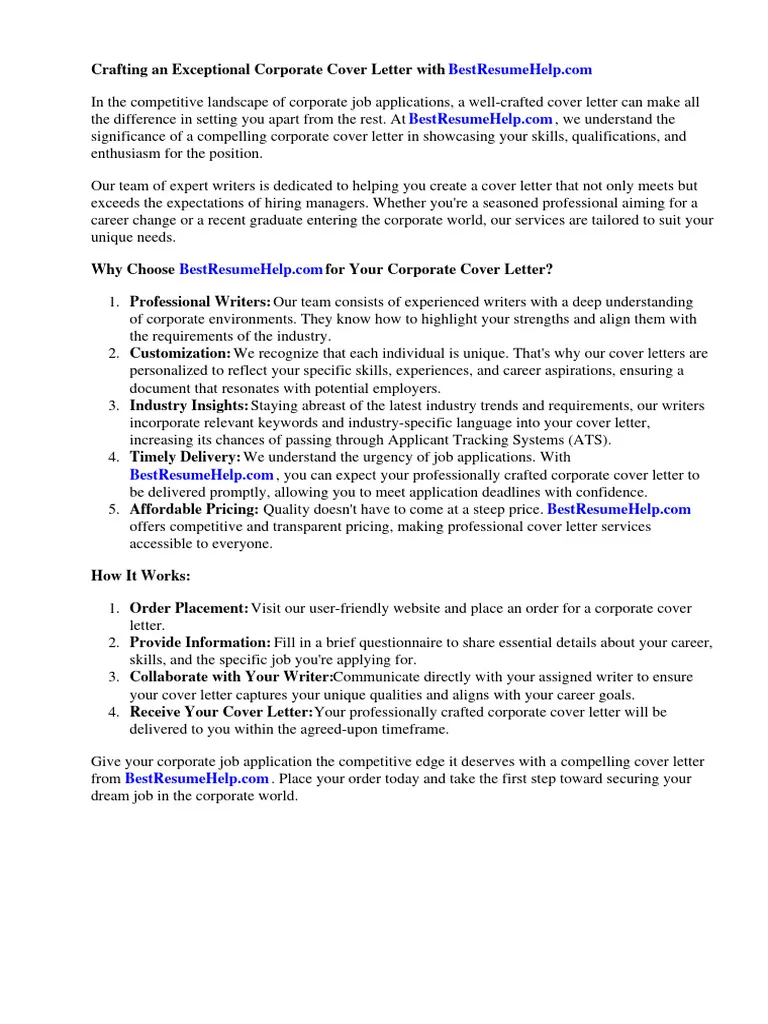Understanding the Purpose of a Cover Letter
A cover letter serves as your introduction to a potential employer. It’s your chance to make a strong first impression and showcase why you’re the perfect fit for the job. Unlike your resume, which provides a factual overview of your experience, a cover letter allows you to inject personality and demonstrate your genuine interest in the specific role and company. It gives you the opportunity to expand on experiences, highlight skills, and explain how your qualifications align with the job’s requirements. Think of it as your personal sales pitch, designed to convince the hiring manager to read your resume and, ultimately, invite you for an interview.
Why Cover Letters Matter
In today’s competitive job market, a cover letter can be the deciding factor between getting an interview and being overlooked. Many employers still highly value cover letters, as they provide insight into your communication skills, writing ability, and attention to detail. They also reveal your understanding of the company’s needs and your genuine enthusiasm for the opportunity. A well-crafted cover letter shows you’ve taken the time to research the company and tailor your application, setting you apart from candidates who simply submit a resume. In essence, it’s your chance to tell a story and make a compelling case for why you deserve the job.
Key Elements of a Compelling Cover Letter
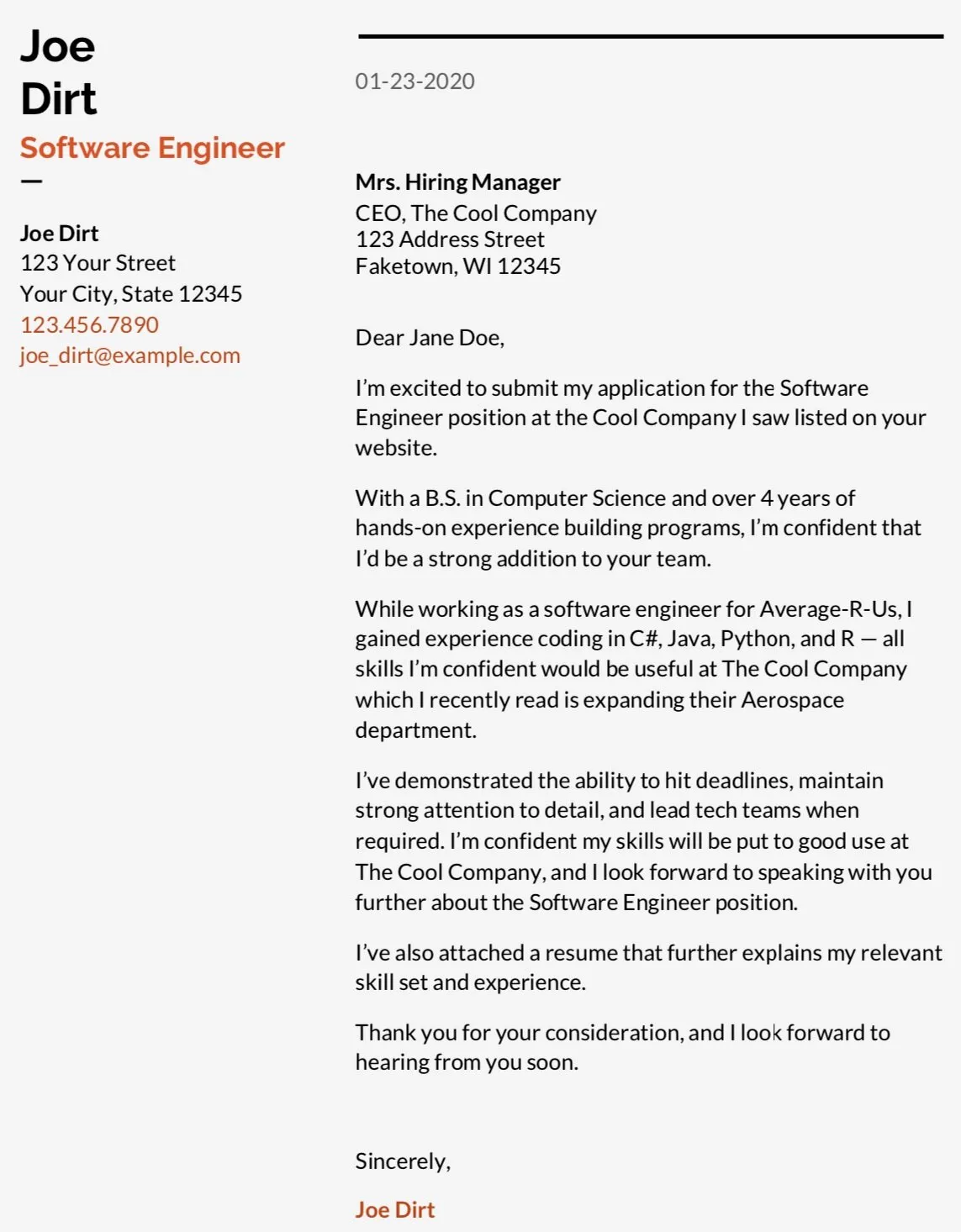
A successful cover letter is more than just a formality; it’s a strategic document that requires careful consideration and planning. To make a lasting impression, you need to include the key elements, which are discussed below. This structured approach helps ensure your cover letter is informative, engaging, and ultimately, effective in persuading the hiring manager to take the next step.
Contact Information and Date
Start your cover letter by including your contact information (name, address, phone number, and email) at the top, followed by the date. Ensure this information is accurate and up-to-date, as it’s how the company will reach you. The date is essential for record-keeping purposes and helps establish the chronology of your application. This standard formatting ensures your cover letter looks professional and easy to navigate.
Addressing the Hiring Manager
Always address your cover letter to a specific person if possible. Research the hiring manager’s name and title (e.g., “Dear Mr. Smith”). This personalized approach shows you’ve put in the effort to learn about the company and demonstrates your attention to detail. If you can’t find a name, use a professional greeting like “Dear Hiring Manager” or “Dear [Department] Team.” Avoid generic greetings such as “To Whom It May Concern,” as these can make your application feel impersonal and generic.
Opening Paragraph Grabbing Attention
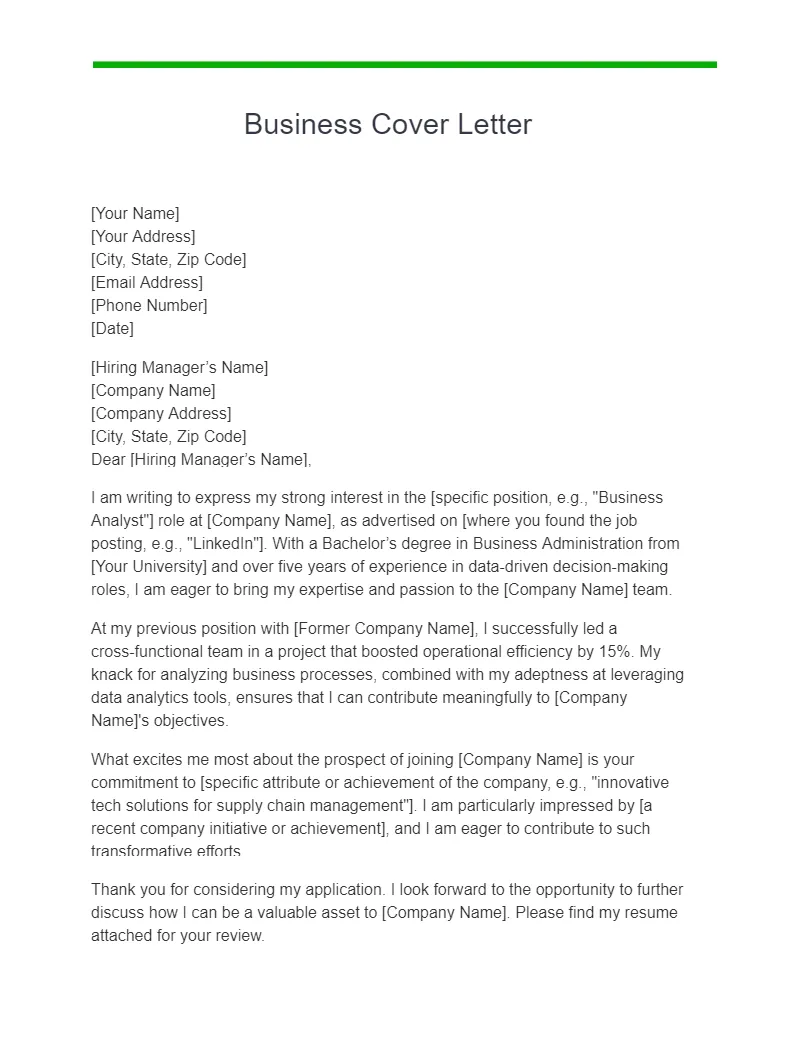
Your opening paragraph is your first and best opportunity to grab the reader’s attention. Start with a strong statement that immediately captures the hiring manager’s interest. Briefly mention the position you’re applying for and where you saw the job posting. Then, highlight your most relevant skills or experience that align with the job requirements. Express your enthusiasm for the opportunity and the company. A well-crafted opening sets the tone for the rest of the letter and encourages the reader to continue.
Body Paragraphs Highlighting Skills
Use the body paragraphs to elaborate on your qualifications and connect them to the job’s requirements. Instead of simply restating your resume, provide specific examples of your achievements and how your skills have benefited previous employers. Focus on the key skills and experiences that the employer is looking for, and use the job description as a guide. Use action verbs to describe your accomplishments and quantify your results whenever possible. Show, don’t just tell, the hiring manager why you’re the best fit for the role.
Quantifying Achievements
Whenever possible, quantify your achievements to demonstrate your impact. Instead of saying “Improved customer satisfaction,” say “Increased customer satisfaction by 15% within six months.” Use numbers and data to showcase your accomplishments and make them more concrete. This provides tangible evidence of your abilities and helps the hiring manager understand the value you can bring to the company. Quantifiable achievements give your cover letter more credibility and make it more memorable.
Tailoring to the Specific Job
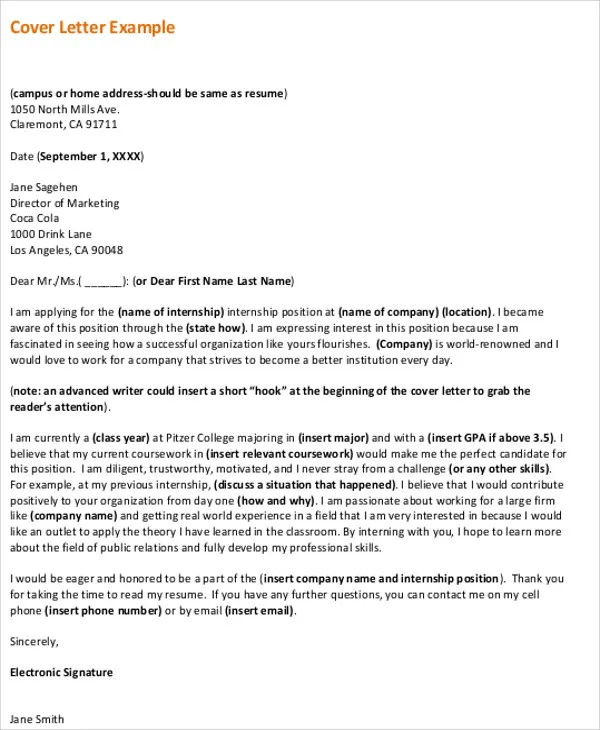
Customize your cover letter for each job you apply for. Don’t send a generic letter. Research the company and the specific role, and tailor your letter to highlight the skills and experiences that align with the job requirements. Use keywords from the job description to show that you understand what the employer is looking for. This shows you’re genuinely interested in the position and have taken the time to understand the company’s needs. Customization demonstrates your attention to detail and your commitment to the role.
Closing Paragraph Expressing Enthusiasm
In your closing paragraph, reiterate your interest in the position and express your enthusiasm for the opportunity. Summarize why you believe you are a good fit and what you hope to bring to the company. Thank the hiring manager for their time and consideration. Always include a call to action, such as inviting them to contact you for an interview or review your resume. A strong closing leaves a lasting positive impression and encourages the hiring manager to take the next step.
Call to Action
End your cover letter with a clear call to action. This could be a statement like “I am eager to discuss how my skills and experience can contribute to your team,” or “I welcome the opportunity to discuss my qualifications further in an interview.” A call to action encourages the hiring manager to take the next step and move your application forward. It provides a clear direction and reinforces your interest in the position.
Proofreading and Editing
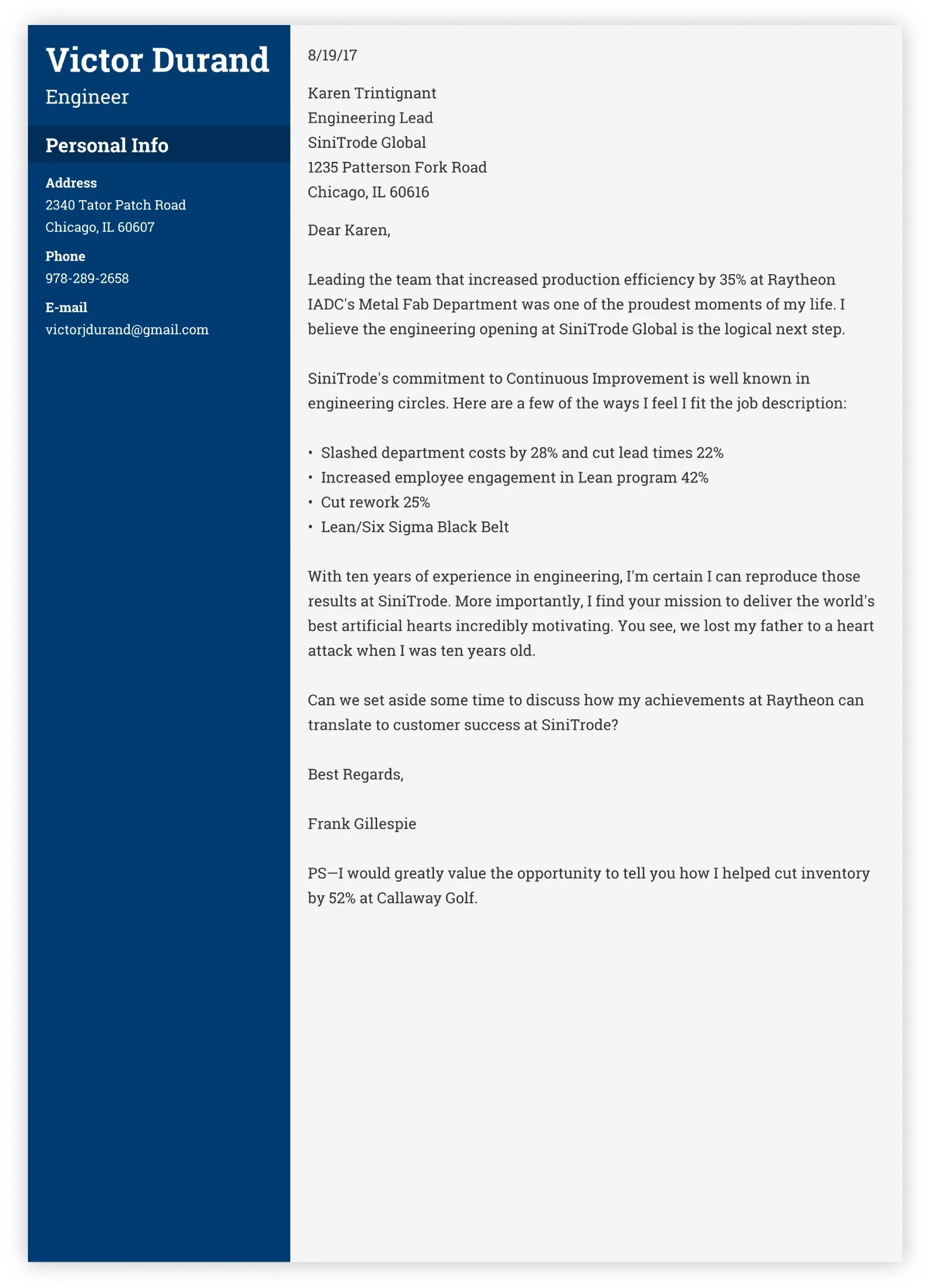
Proofreading and editing are crucial steps in ensuring your cover letter is polished and professional. Carefully review your letter for any grammatical errors, spelling mistakes, or typos. Read it aloud to catch awkward phrasing or unclear sentences. It’s also a good idea to have a friend or career counselor review your letter for a fresh perspective. A well-edited cover letter demonstrates your attention to detail and commitment to quality, which can significantly impact your application’s success.
Formatting and Design
Formatting and design play a crucial role in making your cover letter visually appealing and easy to read. A well-formatted cover letter shows professionalism and attention to detail. Here are the key formatting considerations to help you make a great first impression.
Choosing the Right Font and Layout
Choose a professional and easy-to-read font, such as Times New Roman, Arial, or Calibri. Use a font size between 10 and 12 points. Maintain consistent formatting throughout the document, including the same font style, size, and spacing. Use single or 1.15 line spacing and one-inch margins. Proper formatting makes your cover letter more accessible and ensures the reader can focus on the content. Avoid using overly decorative or difficult-to-read fonts, as they can detract from the overall message.
File Type and Submission
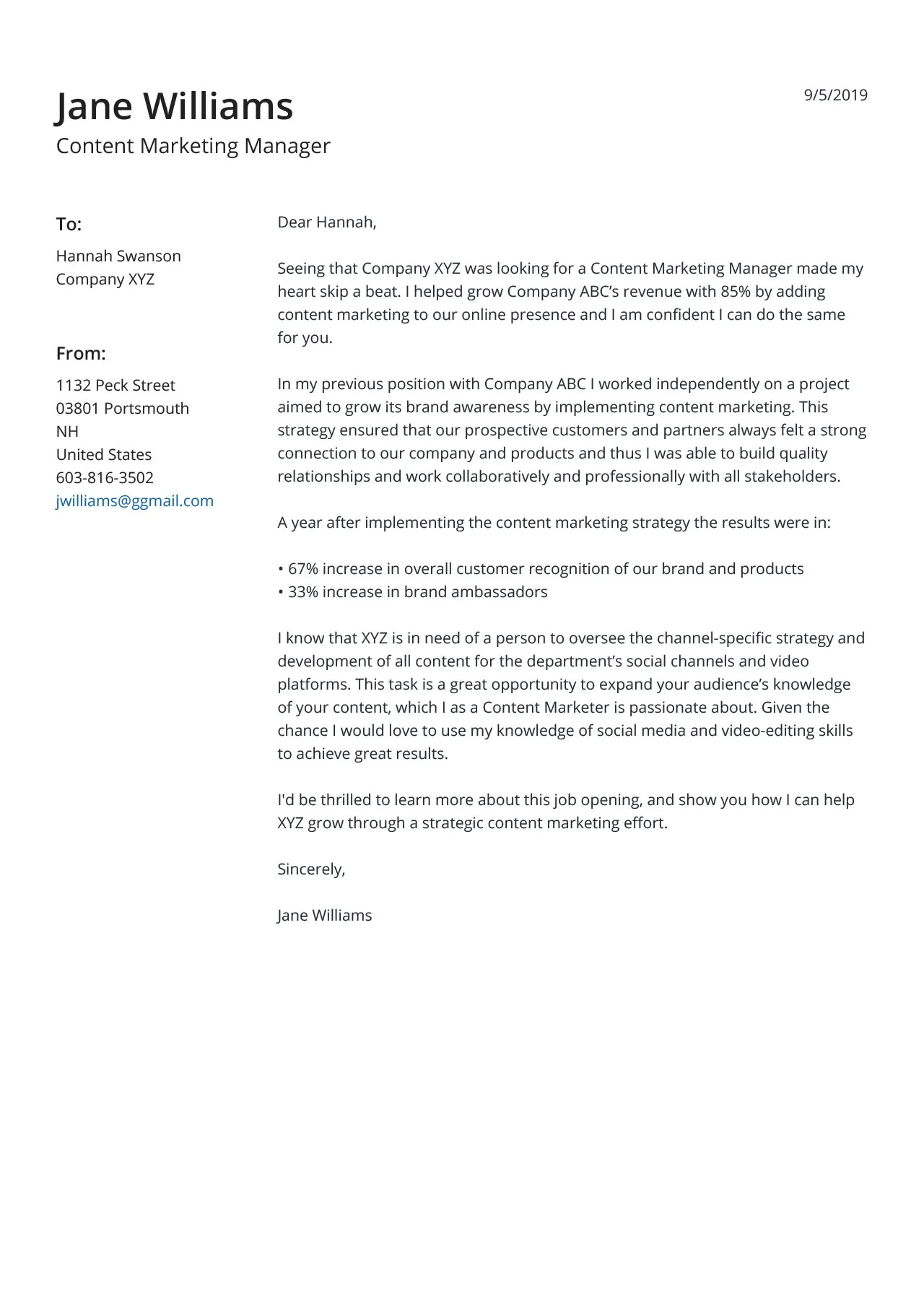
Always save your cover letter as a PDF file unless the employer specifies otherwise. A PDF file ensures your formatting remains consistent across different devices and operating systems. If the application requires a specific file type, follow those instructions. Clearly label your file with your name and the job title (e.g., “JohnDoe_CoverLetter_MarketingManager.pdf”). This helps the hiring manager easily identify your application and keeps your documents organized.
Best Practices for Different Job Types
The best approach for writing a cover letter can vary depending on the job type and your experience level. Understanding these nuances will help you tailor your letter to effectively showcase your qualifications and make a strong impression on the hiring manager.
Cover Letter for Entry-Level Positions
If you’re applying for an entry-level position, focus on highlighting your skills, education, and any relevant experience, even if it’s from internships or volunteer work. Emphasize your enthusiasm, willingness to learn, and adaptability. Tailor your letter to the specific requirements of the job description and explain how your skills align with the role. If you lack direct work experience, focus on transferable skills such as communication, teamwork, and problem-solving. Show the hiring manager why you’re a promising candidate, even without extensive professional experience.
Cover Letter for Experienced Professionals

For experienced professionals, your cover letter should emphasize your accomplishments and how your skills and experience have benefited previous employers. Quantify your achievements with data and statistics whenever possible. Highlight your relevant expertise and how you can solve the company’s challenges. Tailor your letter to the specific requirements of the job and demonstrate your understanding of the company’s needs. Show the hiring manager that you can make an immediate impact and contribute to their success.
Cover Letter for Specific Industries
Some industries may have specific expectations for cover letters. Research the industry and the company to understand their preferences. For example, in creative fields, you might include a link to your portfolio. In academia, your letter might need to address your research interests and publications. Tailor your letter to the norms and expectations of the industry and role. By doing so, you demonstrate that you understand the professional environment and can effectively communicate your value.
Avoiding Common Cover Letter Mistakes
To maximize your chances of success, it’s essential to avoid common mistakes that can undermine your application. Being aware of these pitfalls will help you create a cover letter that impresses employers and sets you apart from the competition.
Generic Content
One of the biggest mistakes is using a generic cover letter that could be sent to any company. Tailor your letter to each specific job application. Show the hiring manager that you’ve researched the company and understand the role. Customize the content to highlight your relevant skills and experiences for each position. Generic content indicates a lack of effort and genuine interest, which can significantly decrease your chances of getting noticed.
Typos and Grammatical Errors
Typos and grammatical errors can make your cover letter look unprofessional and careless. Proofread your letter carefully and have someone else review it. Check for spelling mistakes, grammatical errors, and awkward phrasing. A clean and well-written cover letter demonstrates your attention to detail and commitment to quality. These errors can instantly undermine your credibility and lead the hiring manager to believe you lack the attention to detail necessary for the job.
Exceeding the Recommended Length
Keep your cover letter concise and to the point. Avoid going over one page, unless specifically requested. Hiring managers are busy, and they don’t have time to read lengthy documents. Focus on the most important information and highlight your key qualifications. A well-crafted cover letter can effectively communicate your value without being overly verbose. Respect the reader’s time and make sure every word counts.
Frequently Asked Questions (FAQ) about Cover Letters
This section answers some common questions about cover letters, providing additional guidance and clarity on this critical job application component. These FAQs can help you navigate specific challenges and maximize the effectiveness of your cover letter.
